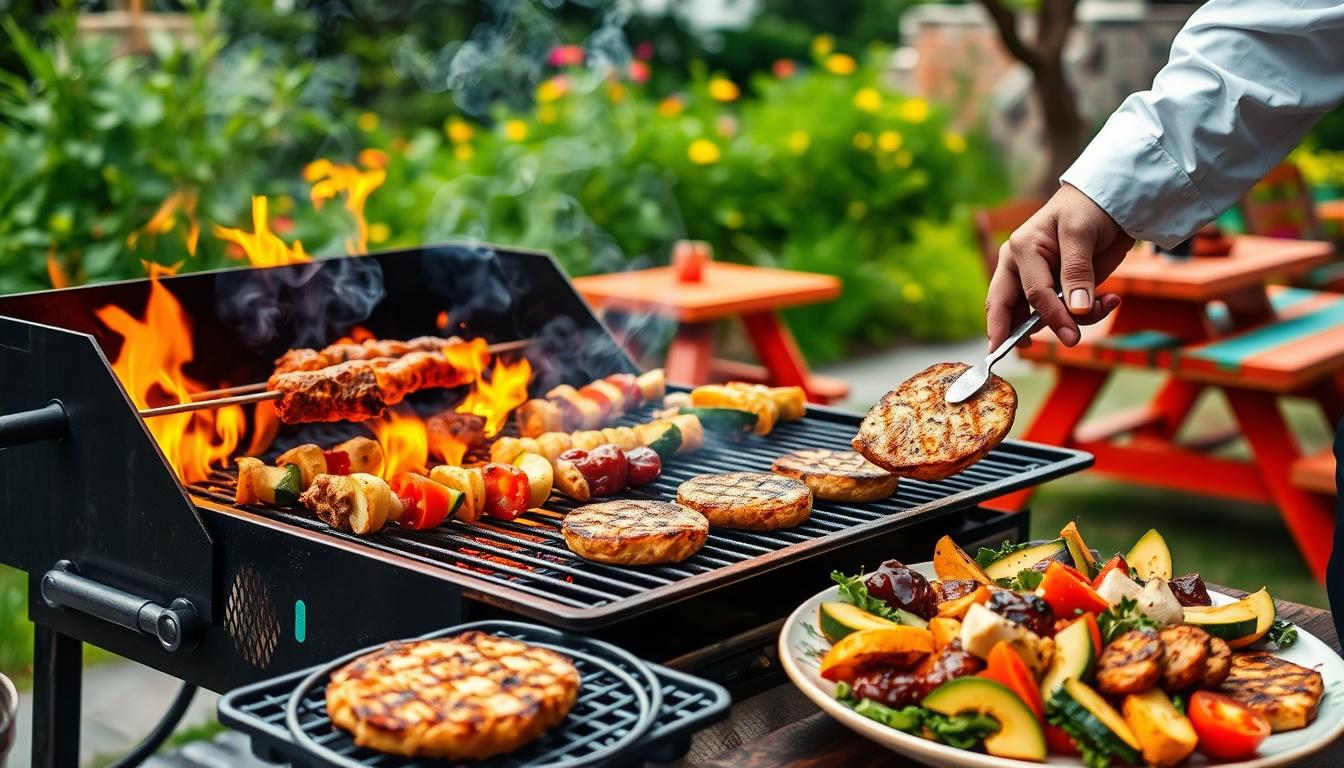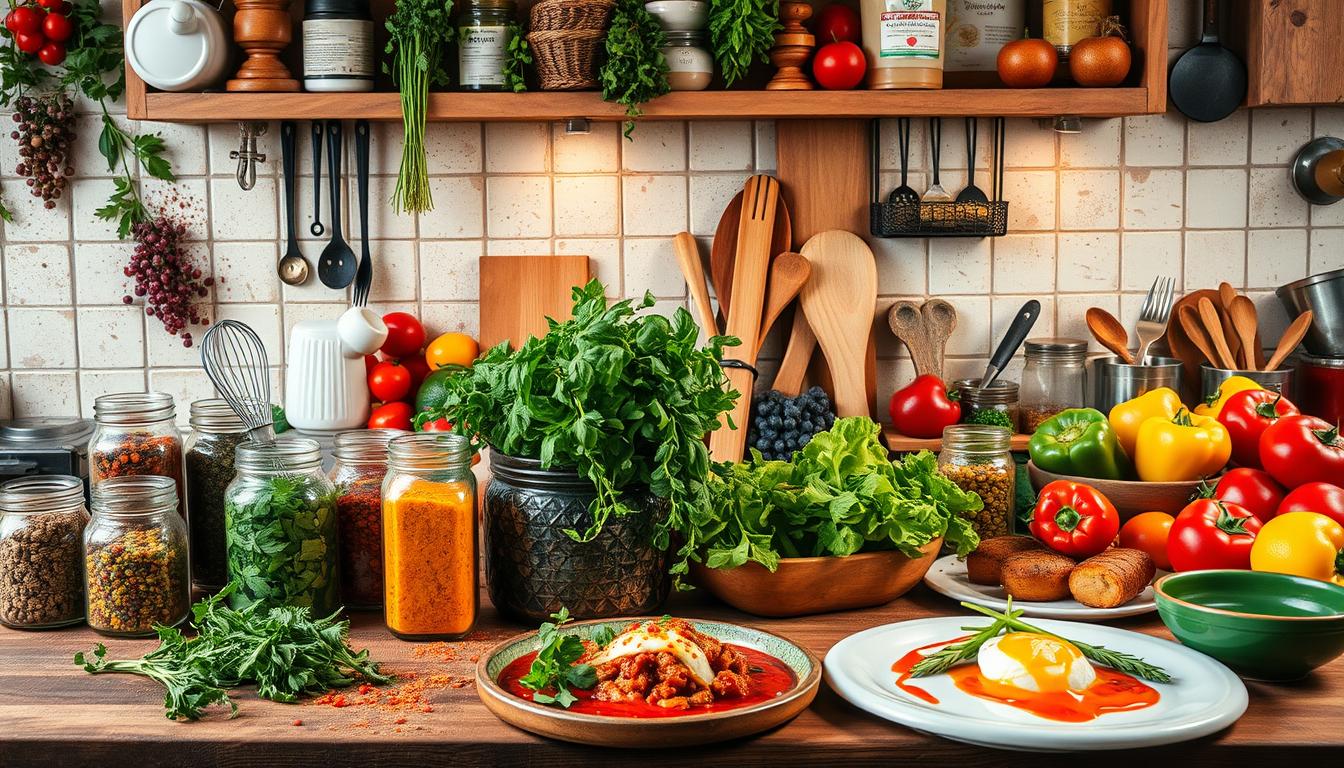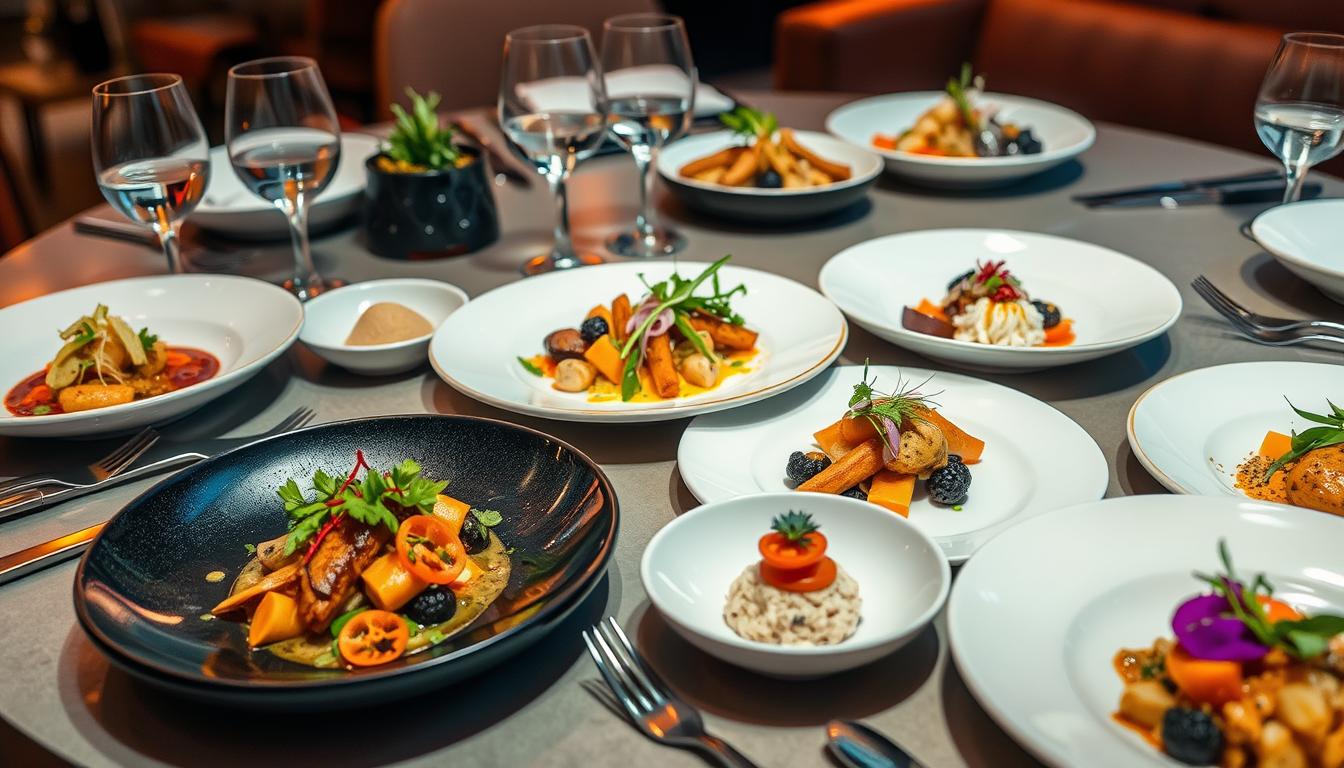Have you ever stood by the grill, the smoky aroma filling the air, wondering if you could really master the art of cooking on a grill? You’re not alone. Many people find the thought of grilling intimidating, especially when faced with the open flame and the pressure of cooking for friends and family. But what if I told you that grilling is not just about cooking; it’s about creating memories and sharing experiences that can last a lifetime? With just a few essential skills and techniques, you can transform your outdoor cooking from daunting to delightful.
Imagine the satisfaction of biting into a perfectly grilled steak or the joy of serving up colorful, charred vegetables that everyone raves about. Whether you’re a seasoned grill master or just starting out, the journey of improving your grilling techniques is incredibly rewarding. In this culinary exploration, you’ll discover how to elevate your grilling game, learn about exciting BBQ recipes, and master the essential skills needed to impress your guests. Take a seat, grab your grilling tools, and let’s embark on this mouthwatering adventure together!
Key Takeaways
- Grilling is a social experience that creates lasting memories.
- 1 in 5 respondents find grilling intimidating due to cooking on an open flame.
- 75% believe allowing meat to rest ensures even cooking.
- 85% of enthusiasts emphasize investing in quality grilling equipment.
- Preheating the grill for 10-15 minutes is essential for even heat distribution.
- Keeping your grill clean enhances safety and performance.
- Using marinades and rubs can significantly improve flavors.
Introduction to Grill Mastery
Grilling stands as one of the most beloved cooking methods across America, captivating countless enthusiasts who embrace it as more than a culinary task but a cherished pastime. Mastering the art of grilling involves understanding a broad range of grilling basics and outdoor cooking techniques that elevate your skills to new heights.
Participating in a structured series such as Grilling 101 can significantly enhance your abilities, offering essential insights into grill safety, food safety, and the versatile use of various meats. This comprehensive program spans ten parts, meticulously crafting a path from beginner to adept griller.
Through expert advice, you will learn crucial aspects of grilling techniques, including temperature management and optimal equipment usage. This guidance empowers you to achieve perfection with every meal, enhancing your technique and inviting experimentation with a myriad of dishes and cuts of meat. Imagine the creativity you can unleash with grilled fish, seafood, vegetables, and even fruit.
Investing in your grilling education pays dividends, not just by enhancing your culinary repertoire but also by allowing you to craft delightful meals at home, saving costs associated with dining out. Various types of grills—Charcoal, Gas, Electric, and Pellet—offer different experiences, with a general preheating time of at least 15 minutes recommended to achieve excellent results.
Understanding temperature zones is vital, with ranges from High Heat (450-650°F) to Low Heat (250-350°F) impacting the outcome. Techniques such as searing meat at high heat not only create complex flavors through caramelization but also contribute to an elevated dining experience.
Finally, remember to rest your meat after cooking for about half the cooking time. This simple step enriches flavors, completing your journey into grill mastery.
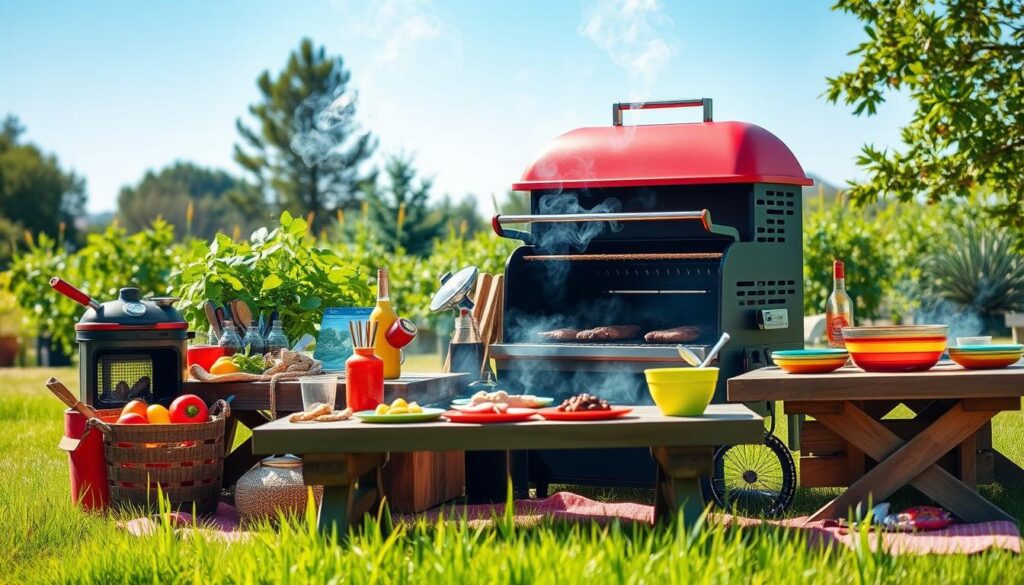
Understanding Grilling Techniques
Grilling methods play a crucial role in achieving delicious results when cooking outdoors. The art of grilling involves knowing how to manage heat control in grilling effectively. Mastering the techniques of direct and indirect grilling enables you to select the right approach for different types of food, ensuring each meal is perfectly cooked.
Direct vs Indirect Grilling
Direct grilling is all about cooking food over direct heat, making it ideal for small cuts of meat that require quick cooking. This technique works best with items that cook in 20 minutes or less, such as burgers and vegetables, allowing you to achieve a satisfying sear and flavor in a short time. On the other hand, indirect grilling is perfect for larger cuts like roasts and bread, which take longer to cook and benefit from a slower, more gentle heat application. Understanding these methods helps you decide when to sear or slow cook, improving your overall grilling experience.
High Heat vs Low Heat Cooking
Control of heat is vital for successful grilling. High heat cooking generally suits quick-cooking foods such as steaks or vegetables, achieving a well-seared exterior in a short time. Low heat cooking, meanwhile, is great for items that require more delicate handling, like fish, chicken, or cake. This method allows for gentle cooking that retains moisture and enhances flavor. Utilizing a combination of high and low heat can give you the flexibility to manage diverse foods effectively. Learning these basics will elevate your grilling skills.
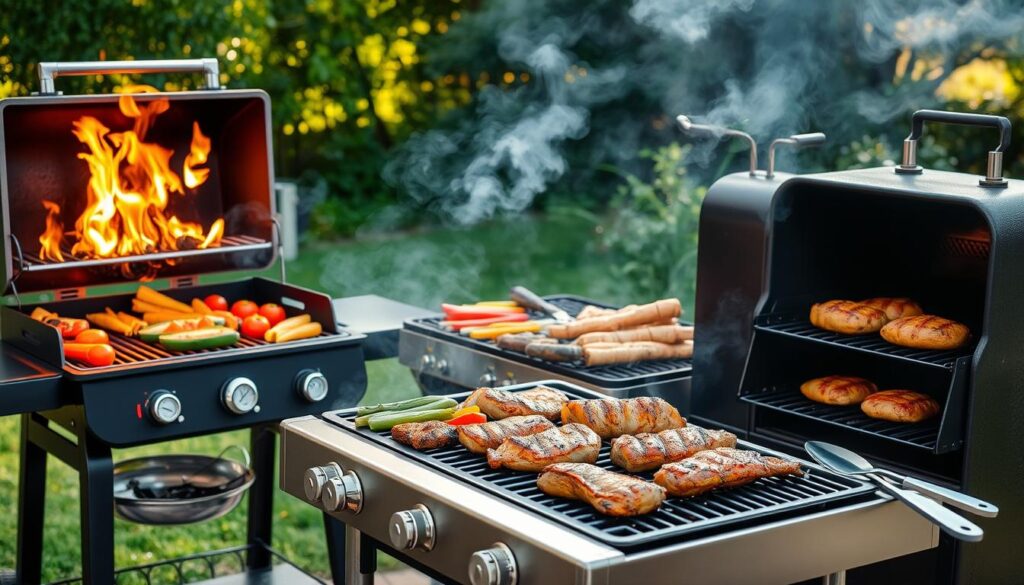
| Grilling Method | Ideal Uses | Cook Times |
|---|---|---|
| Direct Grilling | Small cuts of meat, burgers, vegetables | 20 minutes or less |
| Indirect Grilling | Larger cuts, bread, cakes | Longer cook times |
| High Heat | Steaks, quick-cooking vegetables | Short duration |
| Low Heat | Fish, poultry, slow-roasting | Extended duration |
Choosing the Right Grill: Charcoal or Gas?
When deciding between charcoal grilling and gas grilling, consider your cooking style and flavor preferences. Each method has distinct benefits that cater to different grilling enthusiasts. Understanding these advantages will assist you in making a well-informed grill selection.
Benefits of Charcoal Grilling
Charcoal grilling is celebrated for its ability to infuse rich smoky flavors into your food. Grilling with charcoal offers a unique aroma thanks to compounds like guaiacol, which enhance the taste of meats. Here are some compelling reasons to choose charcoal grilling:
- Flavor: Charcoal grills provide a savory, smoky flavor that many grill masters crave.
- Heat Control: Charcoal allows for higher cooking temperatures, reaching about 200 degrees hotter than gas grills.
- Versatility: It can support direct grilling and indirect smoking, offering flexibility for different cooking methods.
- Cost: Basic charcoal grills start at around $60, generally making them less expensive than their gas counterparts.
- Outdoor Experience: The hands-on nature of charcoal grilling enhances the outdoor cooking adventure.
Advantages of Gas Grilling
Gas grilling stands out for its convenience and ease of use. Perfect for those with busy lifestyles, this method provides quick and efficient cooking. Here are some key advantages of gas grilling:
- Quick Cooking: Gas grills light instantly, reducing preparation time to about 10 minutes.
- Consistent Heat: They offer precise temperature control, making it easier to manage cooking times.
- Cleanup: With less mess compared to charcoal, maintaining gas grills is straightforward.
- Lower Emissions: Gas grills generate about one-third of the carbon emissions from charcoal grilling, showcasing an environmental benefit.
- Increased Cooking Capacity: Two-burner models permit easy two-zone grilling, ideal for meats that require varied cooking techniques.
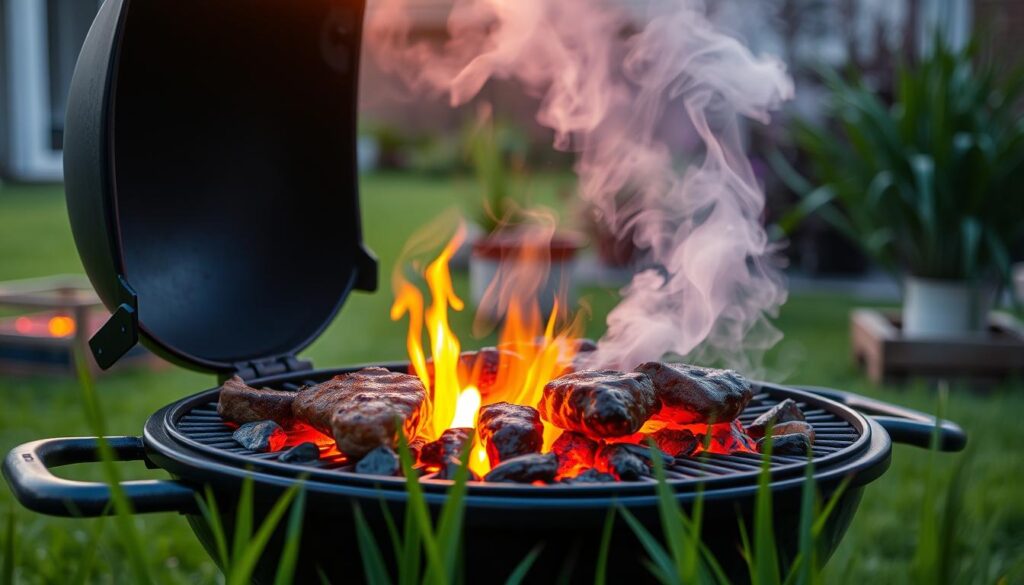
| Feature | Charcoal Grilling | Gas Grilling |
|---|---|---|
| Initial Cost | Starts at $60 | Starts at a few hundred dollars |
| Heat-Up Time | 15-20 minutes | About 10 minutes |
| Cooking Sessions per Fuel | Typically 3 sessions per 20-pound bag | Approximately 25 days per 20-pound propane cylinder |
| Flavor | Rich and smoky | Natural food flavors highlighted |
| Cleaning Ease | Messy | Cleaner, easier maintenance |
Ultimately, your choice between charcoal and gas grilling will hinge on your personal preferences regarding flavor, convenience, and cooking technique. Whether you opt for the tradition of charcoal grilling or the quick efficiency of gas grilling, both methods offer unique experiences that can elevate your outdoor cooking game.
Cooking on a Grill: Essential Skills
Mastering the essential skills of grilling involves understanding two critical components: fire management and optimal cooking temperatures. You can elevate your grilling game by learning how to manage flames and heat effectively, ensuring delicious results every time.
Fire Management Techniques
Effective fire management is key to achieving remarkable dishes on the grill. Start by selecting the right type of charcoal or wood that suits your grilling style. Arrange coals or wood for optimal heat distribution, creating zones of direct and indirect heat. This technique allows you to sear meats and finish them over indirect heat for a perfect cook. Regular maintenance is crucial; scraping off grease and burnt residue prevents flare-ups that can ruin your meal. Preheating your grill for about 30 minutes, or at least 5 to 15 minutes for smaller budget grills, ensures that you achieve a good cooking temperature and reduces the chance of food sticking to the grates.
Optimal Cooking Temperatures
Understanding cooking temperatures on a grill is vital for successful outcomes. For most foods, a preheating temperature of around 450° F (approximately 230° C) is recommended. Utilize a meat thermometer to monitor internal temperatures, preventing overcooking and ensuring juicy results. When grilling larger cuts of meat or poultry, consider indirect grilling by activating one burner and placing food on the other side to simmer over low heat. Remember that patience is essential; excessive flipping or handling of food leads to dryness. It’s also wise to allow food, coated with oil, salt, and pepper, to sit for about 30 minutes before cooking to enhance flavor.

The Art of Marinating and Seasoning
Marinating and seasoning are crucial components of successful grilling. They bring out the best flavors in your meats and add depth to your dishes. Understanding how to create marinades for grilling and effective seasoning techniques will elevate your grilling game significantly.
Creating Flavorful Marinades
Marinades can transform your meat, making it tender and bursting with flavor. The key to making a great marinade lies in using the right balance of ingredients. A general guideline suggests using two parts of wine, vinegar, juice, or dairy to one part of oil. A suggested quantity is to mix around 4 ounces of marinade for every pound of meat.
Different meats have varying marinating needs. For steaks, a marinating time of two hours is usually sufficient. In contrast, a whole shoulder or brisket can benefit from overnight marinating. Poultry requires 2 to 6 hours, depending on whether you’re using pieces or a whole bird. For delicate proteins like scallops, shrimp, and fish filets, 15 to 30 minutes of marination is often adequate.
Three primary types of marinades exist: acidic, enzyme, and oil-based. Acidic marinades can toughen meat if used for extended periods. Enzyme marinades made from yogurt or certain fruit juices are excellent for tenderizing. Oil-based marinades typically include oils, herbs, and spices, providing a simple yet effective way to add flavor.
Feel free to experiment with your marinades. Innovative recipes may include using layerings of garlic, spices, and herbs, which are oil-soluble and enhance flavor. Always remember that while marinating allows flavors to penetrate the meat, the key is to avoid marinating for too long, which can lead to a mushy texture.
Best Seasoning Practices
Effective seasoning brings out the natural flavors of your ingredients. Use a variety of seasoning techniques to find the balance that works for you. Lane’s BBQ offers an array of seasonings, such as their Signature Rub, which can be combined with ingredients like olive oil, soy sauce, and lemon juice to craft unique marinades.
When preparing your meat, gentle massaging helps ensure the marinade fully covers each piece, encouraging flavor infusion. Always marinate in the refrigerator to protect against bacteria and allow the meat to come to room temperature before grilling for even cooking. Experimenting with different combinations of Lane’s BBQ seasonings and sauces will help reveal your preferred flavor profile.
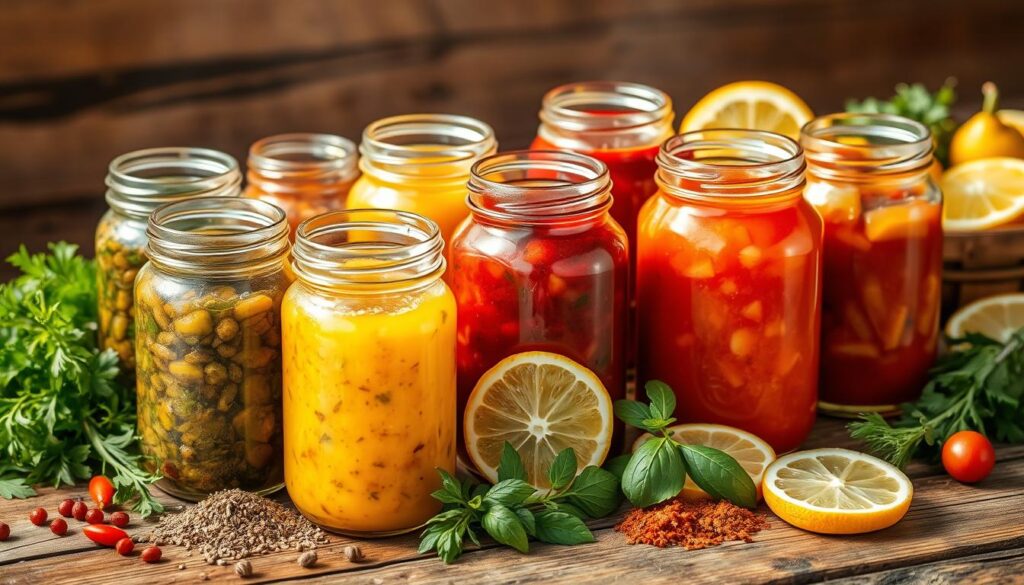
Mastering Grilling Techniques
To truly elevate your grilling skills, focus on mastering key grilling techniques. Understanding these methods allows you to create perfectly cooked dishes while impressing family and friends. Searing and using the right grill accessories for grilling can drastically change your culinary outcomes.
Searing for Flavor
Searing meat is a fundamental technique in grilling that locks in flavors and moisture. The process involves cooking the meat at a high temperature for a brief period. This caramelization creates a rich crust packed with taste. For optimal results, ensure your grill is preheated with the lid closed. This helps maintain high heat, essential for effective searing. Allowing your steak to rest for about three minutes after grilling enhances juiciness and flavor, making every bite more enjoyable.
Using Grill Accessories Effectively
Incorporating grill accessories for grilling can enhance your cooking experience significantly. Accessories like skewers and grill baskets allow for greater versatility, especially when cooking vegetables or small pieces of meat. Consider keeping a spray bottle on hand to manage flare-ups effectively, preventing burnt food. Using high-quality ingredients alongside these accessories will yield the best-tasting results. Remember to clean the grill grates before each use, as this habit will ensure your food remains flavorful and untainted by previous cooks.

BBQ Recipes to Impress Your Guests
Entertaining friends and family with amazing BBQ recipes can take your gatherings to the next level. A well-prepared meal not only satisfies but also creates lasting memories. In this section, you will discover a mix of classic BBQ recipes and innovative ideas that can impress even the pickiest eaters.
Classic BBQ Recipes to Try
Classic BBQ recipes never go out of style. They serve as the foundation of gatherings, ensuring that your guests enjoy familiar flavors. Here are some staples to consider:
- 3-2-1 Ribs: This recipe involves smoking the ribs for a total of 6 hours, making them tender and flavorful.
- Pulled Pork: Smoke for 3 hours before roasting for up to 8 hours more, achieving that melt-in-your-mouth texture.
- Whole Smoked Chicken: This juicy dish requires 2-3 hours of smoking for undeniable flavor.
- Brisket: Smoke brining at about 90 minutes per pound, allowing for overnight preparation.
Innovative Recipes for Bold Flavors
For the adventurous grill master, trying unconventional flavors can bring excitement to your BBQ. Here are a few innovative ideas:
- Incorporate beer into marinades for added depth.
- Experiment with fruit-based ingredients in barbecue sauces, like apricot or chipotle peppers, to elevate your dishes.
- Utilize rosemary as a key seasoning component for a fresh twist.
- Grill vegetables and fruits alongside meats to create a vibrant, colorful spread.
Remember, the presentation of your dishes matters just as much as taste. Consider serving grilled meats with specific side dishes like black rice, beans, or coleslaw to create a well-rounded meal. Happy grilling! Don’t forget to garnish your dishes with fresh herbs or a squeeze of citrus to add color and flavor. Placing your grilled meats on a beautiful platter or using decorative serving dishes can also elevate your meal presentation. Remember, people eat with their eyes first, so take the time to make your dishes look as good as they taste. Happy grilling!
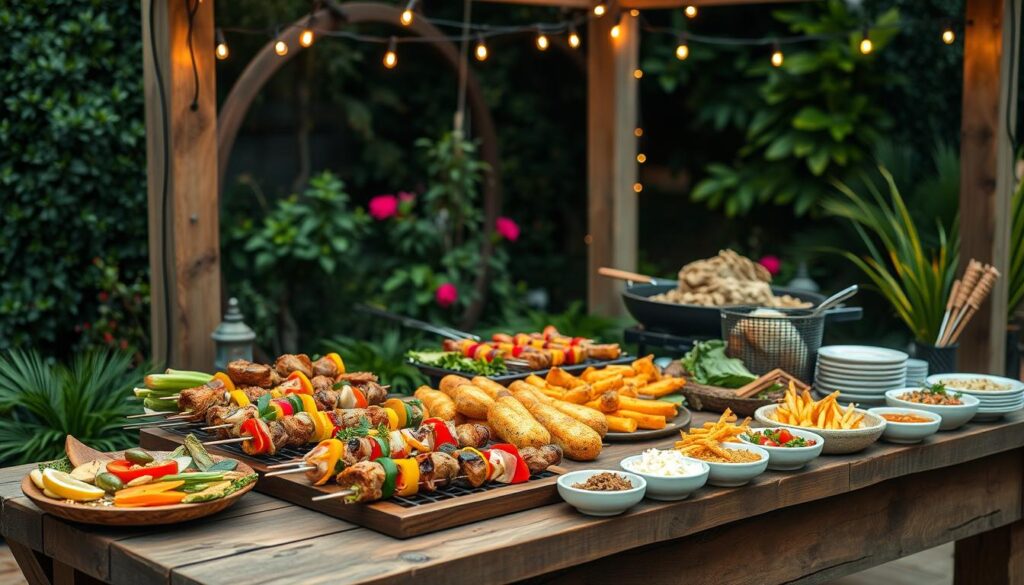
| Recipe | Cooking Time | Main Ingredient | Special Techniques |
|---|---|---|---|
| 3-2-1 Ribs | 6 hours | Pork | Smoking |
| Pulled Pork | 3+8 hours | Pork | Smoking, Roasting |
| Whole Smoked Chicken | 2-3 hours | Chicken | Smoking |
| Brisket | 90 minutes per pound | Beef | Smoking; can be overnight |
Best Grilling Practices for Safe Cooking
Ensuring food safety in grilling involves several essential practices that protect you and your guests from foodborne illnesses and accidents. From the placement of your grill to hygiene while cooking, following these guidelines can enhance your outdoor grilling experience.
Food Safety and Handling
Proper food handling is crucial when grilling. Always use a meat thermometer to check food temperatures, which decreases the risk of foodborne illnesses by a significant margin. Cook chicken to an internal temperature of 165°F (74°C) and ground meats to 160°F (71°C). Beyond cooking temperatures, always maintain cleanliness. This involves washing hands before and after handling food, especially meats.
Preventing Cross-Contamination
Cross-contamination is a common problem in grilling that can lead to serious health risks. Always keep raw meats separate from other foods. Using separate plates and utensils can minimize this risk.
Here’s a quick overview of top safety practices:
| Practice | Description |
|---|---|
| Grill Placement | Keep your grill at least 10 feet away from structures. |
| Stable Surface | Set up your grill on a flat, even surface to prevent tipping. |
| Cleanliness | Clean your grill after each use to prevent grease fires. |
| Supervision | Avoid leaving the grill unattended; have someone monitor the grill when in use. |
| Appropriate Clothing | Wear clothing that won’t catch fire and keep loose strings tied back. |
| Flare-Ups | Keep a spray bottle of water nearby for small flare-ups. |
| Fire Safety | Always have a fire extinguisher close at hand while grilling. |
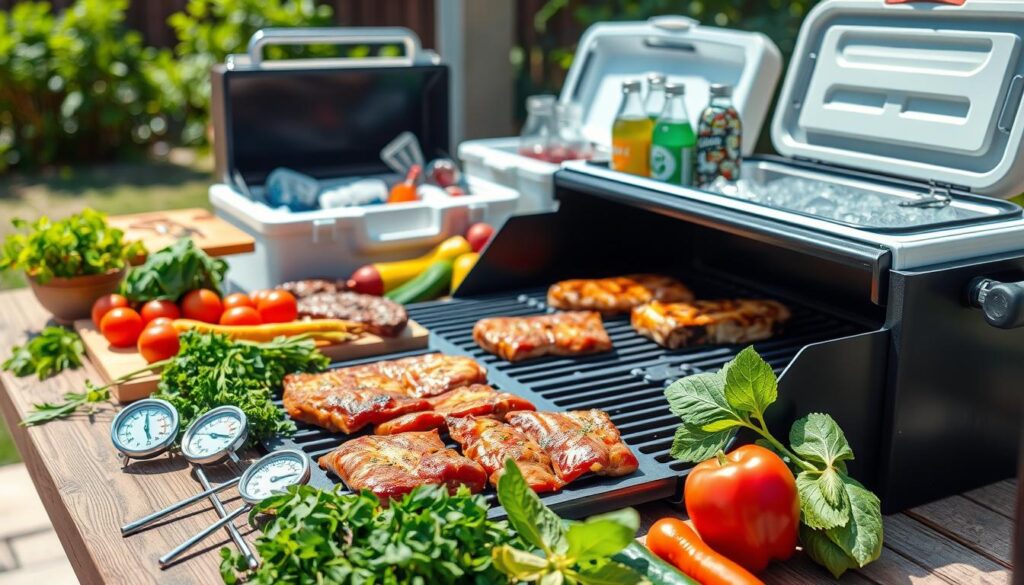
Keeping Your Grill in Top Condition
Regular grill maintenance is essential for ensuring optimal performance and longevity of your grilling equipment. By implementing routine care and effective cleaning techniques, you can significantly improve your grilling experience. Here, you will find valuable tips that highlight the importance of cleaning your grill and maintaining it in peak condition.
Routine Maintenance Tips
For grill owners, following a structured routine can prevent costly repairs and enhance grilling results. Consider the following maintenance tasks:
- Before using your grill for the first time each season, clear away any spider webs, pests, or debris from the grates and firebox.
- For gas grills, always check the gas line for leaks by applying a soap and water solution to connections and hoses. Look for bubbles that indicate leakages.
- Preheat your grill for 10-15 minutes with the lid closed. This process helps to disinfect and turns leftover debris into ash for easier cleaning.
- Inspect and clean the burners, tubes, and catch basin of your gas grill monthly to maintain efficient gas flow.
- After each grilling session, remember to remove spent charcoal ash from charcoal grills to prevent corrosion.
Cleaning Techniques for Longevity
Keeping your grill clean not only extends its life but also enhances the flavor of your food. Follow these cleaning best practices:
- For grease and smoke deposits that accumulate inside, periodically clean the lid, grates, and ash catcher for charcoal grills, along with burner covers for gas grills.
- Grill owners in humid regions should consider leaving their grills uncovered to avoid trapping moisture, which can lead to rust.
- Use a metal bristled grill brush or a wooden paddle-style scraper to ensure a clean grate free from metal scraps.
- Before storing your grill at the end of the season, conduct a thorough cleaning of the cooking grates and exterior surfaces.
- Apply a thin layer of high-heat cooking oil to the grates before preheating for a semi non-stick surface.
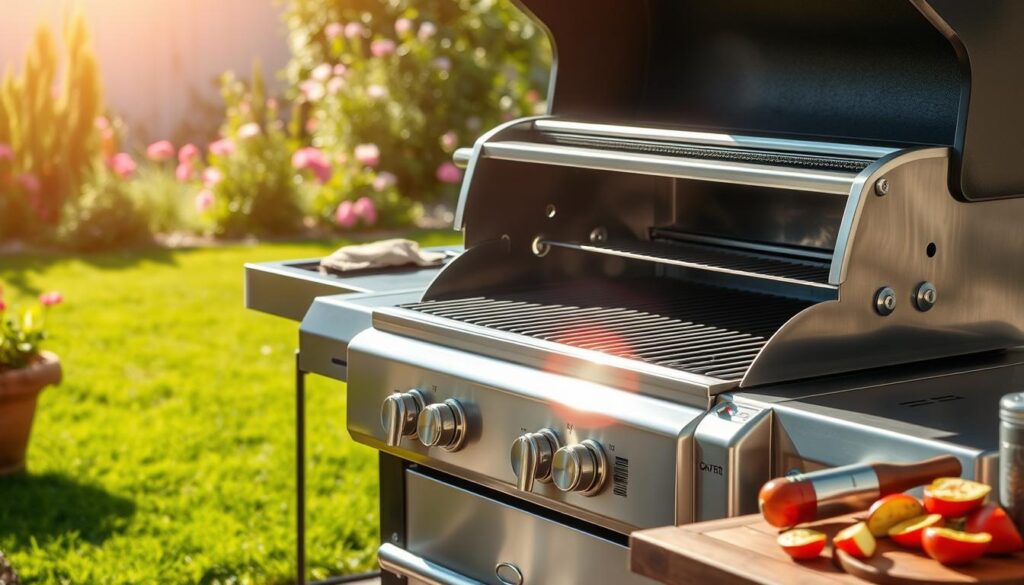
By prioritizing grill maintenance and adopting effective cleaning practices, you will ensure that your grilling companion remains dependable and ready to deliver exceptional culinary results for years to come.
| Maintenance Task | Frequency | Purpose |
|---|---|---|
| Check for gas leaks | Before each use | Ensure safety and proper functionality |
| Preheat grill | Before each cooking session | Prepare grates and disinfect |
| Remove ash (charcoal grills) | After each use | Prevent corrosion and maintain cleanliness |
| Clean burners and tubes (gas grills) | Monthly | Maintain gas flow efficiency |
| Thorough clean (end of season) | End of grilling season | Prepare grill for storage |
Exploring Outdoor Cooking Styles
Outdoor cooking styles encompass a range of techniques that extend beyond traditional grilling. Embracing these methods can enhance your culinary experiences. Whether you enjoy the smoky flavors of barbecue or the vibrant taste of grilled vegetables, outdoor cooking allows for creativity while fostering memorable moments with friends and family.
Benefits of Outdoor Cooking
Engaging in outdoor cooking brings numerous advantages. Fresh air invigorates the senses, creating a relaxing atmosphere. Cooking outside encourages social interaction, making mealtime more enjoyable. Moreover, outdoor cooking offers versatility, accommodating various styles like grilling, roasting, and smoking.
Integrating Outdoor Cooking with Grilling
To elevate your outdoor cooking experience, consider integrating other techniques alongside grilling. For instance, smoking meats at low temperatures allows for tender, flavorful results. You might roast vegetables over charcoal for a delightful side dish or bake delicate desserts on a wood pellet grill. Each method complements the benefits of grilling by adding unique textures and tastes to your meals.
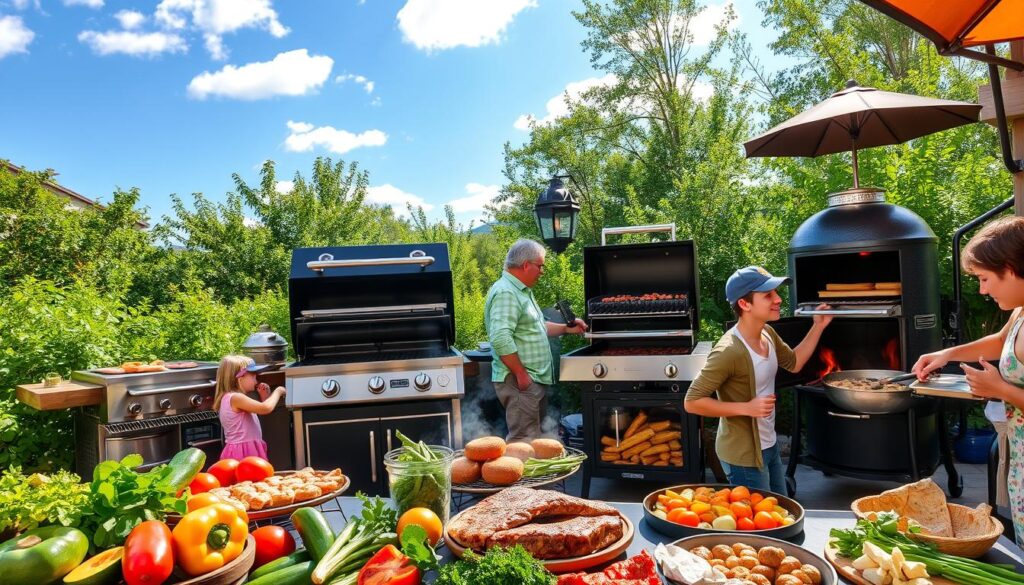
| Cooking Method | Temperature Range | Best Foods |
|---|---|---|
| Grilling | 400°F and above | Steaks, burgers, seafood, vegetables |
| Roasting | 350°F to 500°F | Whole chickens, large cuts of meat, root vegetables |
| Baking | 300°F to 450°F | Breads, cookies, cakes, casseroles |
| Smoking | 150°F to 300°F | Ribs, brisket, pork shoulder, tough cuts of meat |
Grilling Accessories to Elevate Your Skills
Investing in high-quality grill accessories can significantly enhance your grilling experience. Whether you are a novice or a seasoned grill master, certain tools can improve efficiency and lead to better results. Here’s a look at must-have accessories that can transform your grilling sessions.
Must-Have Accessories for Every Grill Master
- The Cave Tools BBQ Kebab Skewers: Their unique flat design prevents delicate foods like scallops from spinning, ensuring even cooking.
- The Cave Tools Kebab Rack: Keeps kebabs elevated, reducing the risk of scorching on the grill grates.
- The Grill Daddy Grand Grill Daddy Grill Cleaning Brush: This heavy-duty tool loosens burnt-on residue while its water reservoir releases steam for easier cleaning.
- The Jolly Green BBQ Gloves: Providing heat resistance up to over 400°F, these gloves offer an excellent grip and are dishwasher safe for convenience.
- The BakerStone Pizza Oven Attachment: A cost-effective way to create delicious pizzas on your standard grill without the need for a standalone oven.
- The M Kitchen World Silicone Basting Brush Set: Dishwasher-safe brushes ideal for applying sauces while grilling.
- The Oxo Good Grips 16-Inch Locking Tongs: Nimble and lightweight for a perfect grip, keeping your hands safely away from heat.
- The Slow ‘N Sear Deluxe Charcoal Grill Basket: Designed for controlled charcoal placement, great for achieving the perfect sear without burning food.
- The Sumpri Color Coded Extending S’more Sticks: Fun and practical for making s’mores, featuring retractable functionality for easy storage.
- The Traeger Rib Rack: This rack allows for grilling multiple racks of ribs simultaneously, enhancing your cooking capacity.
How Accessories Enhance the Grilling Experience
Quality grilling tools offer numerous benefits. Approximately 75% of the recommended accessories are made from durable stainless steel, ensuring longevity. Additionally, accessories catering to specific food preparations, such as meat shredders and vegetable tools, constitute around 30% of the offerings, promoting culinary versatility.
Moreover, a growing trend in gourmet grilling is evident, with 50% of the discussed tools designed to enhance flavors. Eco-friendly items comprise 20% of the listed accessories, reflecting a commitment to sustainable practices in outdoor cooking. The attention given to maintaining grill cleanliness highlights the 15% of accessories with innovative cleaning solutions, while 10% focus on safety measures, keeping grilling enthusiasts protected.
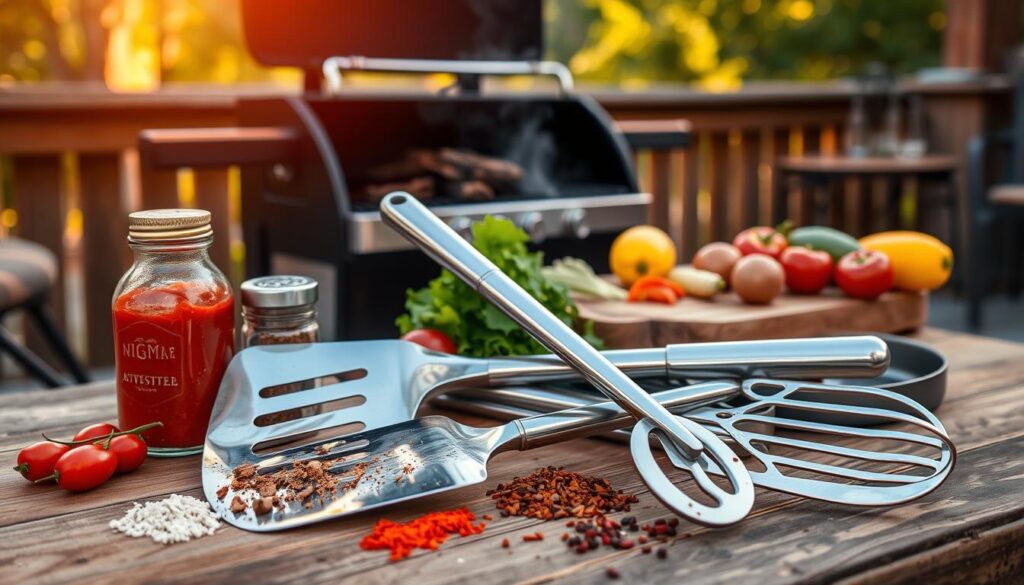
| Accessory | Features | Benefits |
|---|---|---|
| The Cave Tools BBQ Kebab Skewers | Flat design | Prevents food from spinning |
| The Grill Daddy Grand Grill Daddy Brush | Steam release | Effortless cleaning |
| The Jolly Green BBQ Gloves | Heat resistant | Excellent grip and safety |
| BakerStone Pizza Oven Attachment | Cost-effective | Pizza making on a grill |
| The Traeger Rib Rack | Multiple racks | Increases cooking capacity |
Conclusion
As you navigate your outdoor cooking journey, the knowledge gained about grill mastery can significantly enhance your skills and cooking experiences. From choosing between charcoal and gas to understanding essential techniques like direct and indirect grilling, you’ve laid the groundwork for becoming a confident grill chef. The art of grilling is not just about cooking; it’s about creating culinary connections and unforgettable moments with family and friends.
We encourage you to apply the tips, recipes, and tools discussed throughout this article. Don’t shy away from experimenting with flavors, grilling techniques, and even the types of wood you choose for that perfect smoky essence. Each cookout presents a fresh opportunity to impress your guests, while also refining your talents in the grilling arena.
Remember, grilling is about enjoyment and fostering relationships around delicious food. So go ahead, fire up that grill, and embrace all the possibilities this outdoor cooking journey has to offer!
